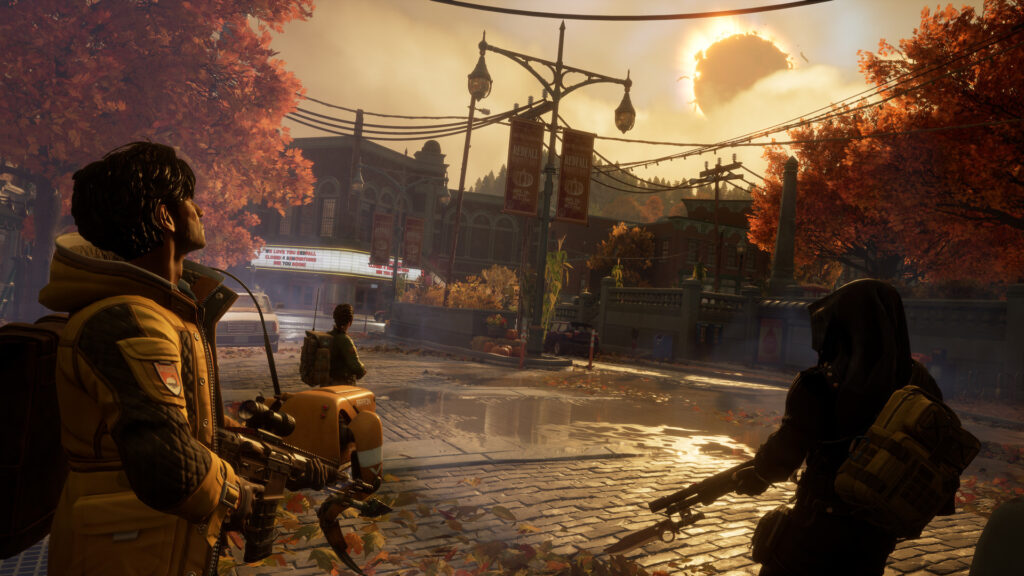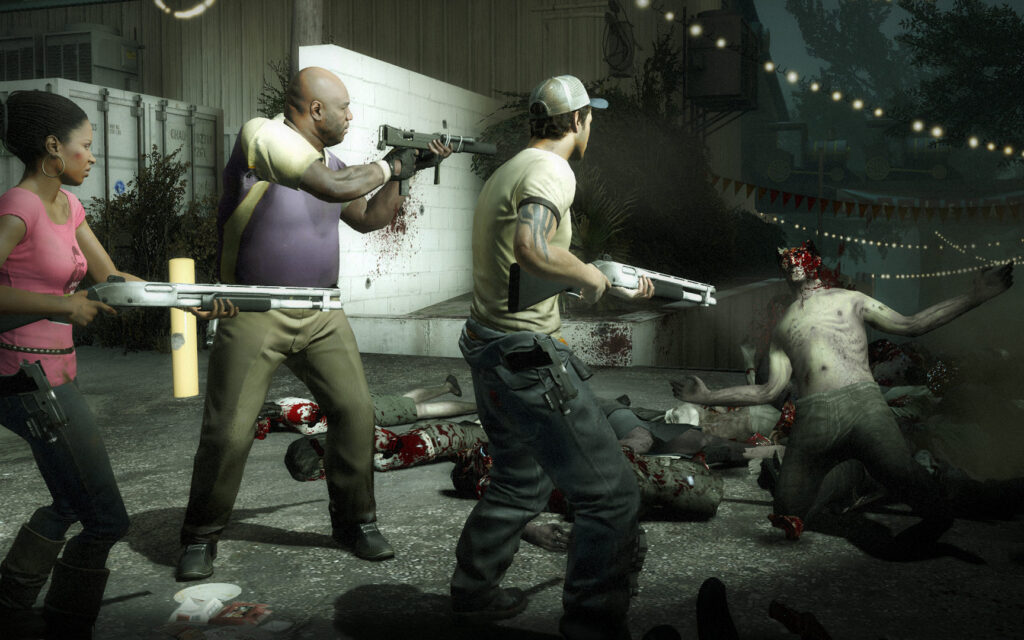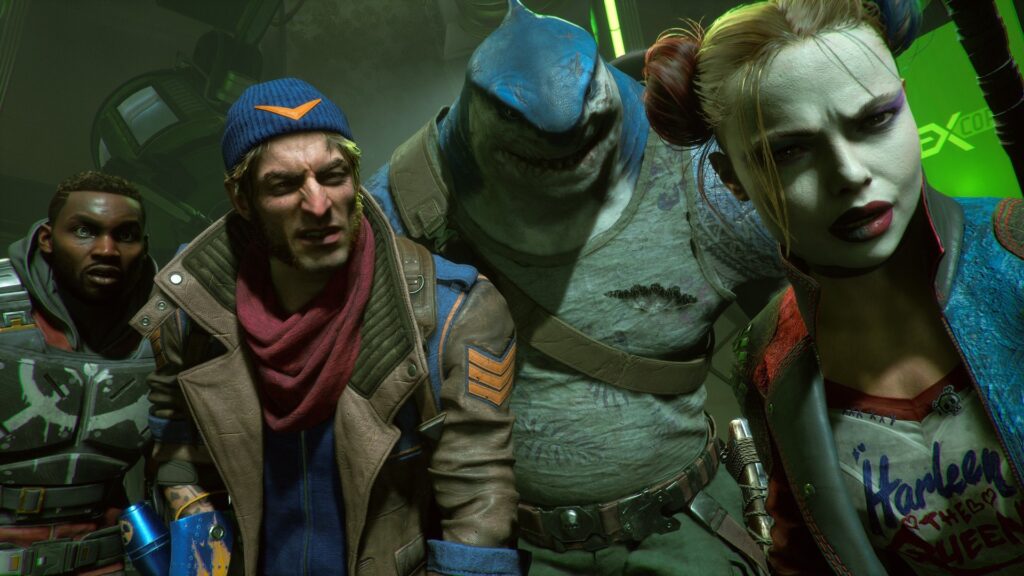2024 was not a good year for live service multiplayer experiences, with many of the older ones AAA developers attempted not even in service anymore. While I was thinking about the failure of Gotham Knights, and looking at the response to Suicide Squad, major studios and publishers are failing to understand the lessons of good multiplayer that games like Lethal Company, Helldivers 2, Deep Rock Galactic, and Left 4 Dead did right.
Know Your Role
Playing with friends or strangers cooperatively can be a great time when it’s handled correctly. We have seen many examples of how coop can help bring people together, allow a younger or lesser skilled player to enjoy a game, or become the new group activity for friends to play.
In any multiplayer game, communication is key and so is figuring out what each player’s role is supposed to be. Who is the sniper, the best builder, sneaker, etc. Good cooperation is about establishing the role each player brings to the team and this is handled two ways. Either everyone is a unique character and one-off providing support to the team differently, or everyone is the same, and it’s the individual players who define what their role is going to be.

Redfall tried to capitalize on multiplayer design, but failed to make each character feel great and different to use. (source: Steam)
The problem a lot of AAA games have is that they’re trying to make a one-size-fits-all — where every character has to be slightly good at everything and they all have to play the same way. Yes, you can give someone a unique power or say that this character is good with shotguns vs. SMGs, but at the end of the day, they’re still performing the same tasks the same way as everyone else on the team.
What you want is to either go all unique — every character is completely different or provides a different role, or all the same — everyone has the same base characteristics and abilities. Having unique roles allows you the freedom to design missions and content knowing exactly what is available to the team. This is the brilliance of Deep Rock Galactic who gets a ton of mileage out of simply having four different classes to play. The overall objectives for each mission type remain the same, but who is what class and the modifiers on the missions greatly affect what’s going to happen.
The other way of giving everyone the same abilities is that it again allows the designer the freedom to create unique and interesting missions. You don’t need to worry about someone being the “defense class” or “heavy”, when everyone is set up the same way. Now the game can focus on unique objectives and challenges to test the group of players. There can be meta progression, as we saw with World War Z, but the progression stems from stock classes. Whereas with Back 4 Blood, differentiation begins with the character you choose and your deck that dictates what you are best at.
With GTFO, everyone is the same — with the same base stats and sets of abilities. The uniqueness comes from being able to choose different equipment to take into a stage and defining the player’s role through it.
You can feature generic enemies meant for the players to plow through, such as in Darktide and Left 4 Dead, but the situations as a whole need to provide the means of differing plays which I’ll come back to further down. No one wants to just repeat the same map, with the same enemies, in the same positions with the only difference being they hit harder, or they take more damage.
One For All and All for One
The problem that AAA coop games have is that they’re trying to force cooperation — if your character can only open green doors, but your friend can open blue doors, then you need to work together. Or everyone is essentially the same, but not really, so the experience just feels like the player is only playing a quarter of a great character. This kind of arbitrary design is part of the problem I had with Gotham Knights and how each character feels like a lesser version of Batman. Yes, one of the Knights is better at stealth, or better at combat, but they’re all still doing the same thing.
The coop games that have the highest highs are the ones where players can uniquely contribute to the group — whether it’s by the character they chose or by their own individual skill set. It’s a very fine line to walk in terms of encouraging players to work together vs. outright demanding it. Playing Left 4 Dead and Deep Rock Galactic, solo players can certainly get a lot done on their own, but the games both feature ways of penalizing the lone wolf. In L4D, the special infected are explicitly designed to take out stragglers and people out of position. In DRG, each class has a way of helping the group as a whole — soldiers have a zip line and portable shield, engineers can set up foam platforms, etc. While yes, you can ignore the other players, it’s going to slow the game down and make it harder to progress.

You can get away with having generic abilities, if you make the mission design and teaming up fun to do. (Source: Steam)
By giving characters unique abilities that can fit a variety of situations, it then allows the developer to create a variety of situations where everyone feels like they are contributing in some way. And more importantly, the developers make it very clear that a standard team is one of each class, and that is the balancing that missions and objectives are balanced around.
The uniqueness also expands how these characters can grow or their options during play. Deep Rock Galactic does not have anywhere near the same level of upgrades and loot that a game like Suicide Squad or Redfall had, but the upgrades it does have are far more meaningful. Which mods and gear you choose for your dwarf greatly changes what you can do during a dive; on top of changing from one class to another. Getting a fancier shotgun or rifle still means you’re using a shotgun or rifle, but there’s more shinier numbers attached to it.
Too many AAA coop games like having generalized characters, such as Redfall or even Marvel’s Avengers, where you are technically playing as different characters, but the gameplay is still largely the same between them. Having Captain America or the Hulk fighting groups of enemies should be completely different affairs, but they still largely feel the same. This is also a problem we see from hero shooters or hero collectors where characters are released frequently, and while they may cosmetically look different, they all must fit within set class roles and structures defined by the developers. What has helped Marvel Rivals is that while you have three sets of class types, the abilities and functionality between members of the same class vastly differs. You can still have standardization among the basic design of different characters, such as the format for killers in Dead by Daylight, but that should be where the similarities stop.
A Complete Package Quadrupled
Perhaps the second biggest misstep from studios who are trying to get in on the coop market once again goes back to character design. Instead of building interesting characters who feel good to play with and are unique in terms of their playstyle, they take an interesting concept of a character and build four characters as parts of that character.
This ends up doing one of two things — the level design will punish the player(s) if they don’t have character X on their team for certain sections, or every character can do the same thing, so there’s no reason to have other characters or need them.

Suicide Squad has different characters, but they’re all just running and gunning and loot gathering (source: Steam)
I’m starting to think that Borderlands getting as big as it did was a mistake for coop design, as the formula of “here’s a group of characters who only have one cool thing a piece from each other” really hurt the design of coop games. You can argue that the passive trees are there to flesh out characters more, but it doesn’t change the fact that everyone is just a copy of one another with the only exception being their “special power.” This is also used as a method to try to sell people on the games as a service loot progression of games like Suicide Squad and Marvel’s Avengers. Instead of having fewer, but more important upgrades, these games just throw all manner of shiny things at the player and none of them change the core gameplay of that character — Hulk is going to punch and roar the same way regardless of the quality level of his pants.
Two games that handled coop well with different approaches were Gunfire Reborn and Roboquest. Gunfire Reborn features completely different characters who are distinguished by having different passive skills, different upgrade tracks, different preferred weapons, and different secondary and special attacks. What one character can do is different from what another character can do, with the common denominator being the weapons. This also has the benefit of vastly changing the experience playing Gunfire single or with a group, as the group can play off each other’s characters for interesting combos.
In Roboquest, it can only be played with two players, but both players have full access to all the gadgets and advanced movement tech available on their profiles. Whatever class they choose will affect what weapons and utility they bring to the field. This game is far harder, and more shooter-dependent compared to Gunfire, while Gunfire‘s design allows a good build to trump the need of having high-level FPS skills.
You need to set an established baseline for what the player(s) can bring into a level or run and use that to design interesting content that can also scale.
Long-Term Teamwork
The more damning misstep from developers and publishers who go into these games unprepared is the long-term aspect of playing them. As I’ve said before, a lot of people discount the work and scope that is required to make a live-service game function.
For these games to work, the right kind of content needs to come out and the foundation must be there to scale accordingly. What I mean is good content for coop games, or multiplayer in general, must be evergreen — there must be a reason to replay this map or do this mission 2,5,100, 10,000, times. That means setting up map and level design that can be approached and modified in different ways — different paths through the level, different modifier events, enemy varieties, mission objectives, and more. This was the stroke of the brilliance of Back 4 Blood that the modifier events on the higher levels really do force players to adapt map by map. The entire “dungeon master” approach that Helldivers 2 has taken is also a good example of providing a guiding force and rationale for continued playing.

Deep Rock Galactic changes things in minor and major ways each season to provide a reason to come back for some rock and stone (source: author)
If you think that live-service support of these games is about building a set of missions that only need to be played once every six months, your game is going to fail spectacularly.
When the plans were announced for Marvel’s Avengers that new content was going to be brand new linear story maps, I knew that there was a problem. You need to have content and level design that can be reused and altered in different and entertaining ways. And when new maps and missions come out, they should be just as expandable. The worst kind of content and support is something that is only meant to be experienced one time — and why just designing content around limited-time events is a mistake or a season that is just repeating the same mission type repeatedly. Payday 2‘s map design at its peak was great at presenting multiple ways of approaching them, allowing different players and builds to complete missions whether they are playing loud, stealth, or a mix. A great map/mission should be fun to play on day one of its release, or after thousands of runs on it.
In Deep Rock Galactic, seasons bring with them a new season pass of cosmetics to go after and a focus on event types that can show up on any mission. If there is something unique from a gameplay or design POV added, that will be folded into the base game, while seasonal minigames and little things will be cycled out for something new.
At the end of the day, however, all the progression, loot boxes, and shinies in the world are not enough if the base game is not fun to play with friends. People want a game that they and a few buddies can enjoy from minute one, not after hours of grinding, not after getting the right upgrade, but from the very first mission.
Friends to the End
The reason why publishers and studios love these kinds of games is that when they work, as with Payday 2, Helldivers 2, Lethal Company, and so on, they become a license to print money. Playing with friends keeps people far more engaged than just competitive matches with randoms. And if the game continues to do well, you can keep putting out content and DLC for it and watch the money roll in.
However, making this work requires an excellent foundation and design philosophy that can be extended indefinitely if the studio chooses. Your game should be exciting to play regardless of your character, and the entire team needs to feel like working together is a joy, not a chore. You don’t want content that is meant to be “beaten”, you want content that should feel interesting to play every time regardless of your character and who is playing with you. There is certainly room to discuss making a “hardcore coop” game like GTFO, but the issue the game had was with onboarding and the team dynamics. In most coop games, you can play with your best friends or complete strangers and still have a fun time and make progress. In GTFO, if just one person on your team cannot carry their weight, then the entire team will fold.
And it’s why just making “singleplayer, but worse” or “multiplayer with limits” and thinking that is going to keep people playing is never going to happen. For another point, this is also why the best multiplayer games are designed as multiplayer only, as the amount of work to create both a fantastic single and multiplayer experience is out of budget for many studios.
As we’ve seen with the successes of the games mentioned, there is a very hungry market for coop games, but it is a lot harder to nail right compared to making a loot-driven game. People want to interact with their friends or make new ones; not interact with the umpteenth lootbox or gacha banner.
Can you think of great coop experiences that I missed, let me know.
Be sure to follow me on Bluesky and you can find my works and support from there

